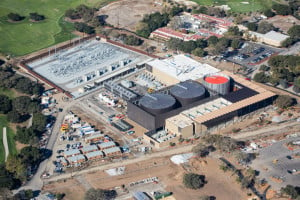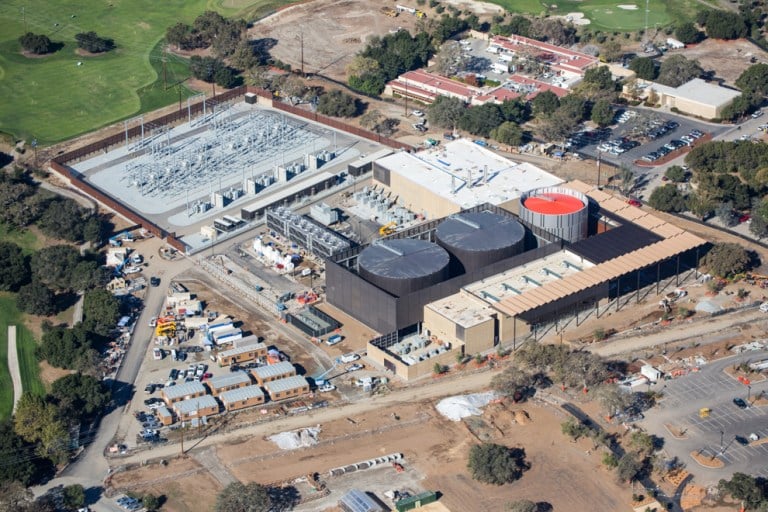
The Stanford Energy Systems Innovations (SESI) project kicked off the opening of its Central Energy Facility, located near the golf course, with a private tour and reception on Thursday, featuring University President John Hennessy, SunPower President and CEO Tom Werner and other executives and University officials.
According to Joseph Stagner, executive director of the sustainability and energy management department and one of the event’s speakers, the University began developing a plan in 2008 for a more efficient and sustainable energy system to replace the now 28-year-old cogeneration plant, whose contract expired at the end of last month. The plan eventually honed in on two new energy production methods: heat recovery and solar power.
“After analyzing the energy patterns of the campus, we devised this scheme which would allow us to collect all the waste heat and use it to heat the campus, and that turned out to be a lot more efficient, a lot more economical and it reduced greenhouse gases and water use, and so that’s why the campus selected this option,” said Stagner.
Replacing the old steam heating system, three new water-to-water heat pumps capture heat waste which is then returned to buildings to fulfill the campus’ heating needs. Hennessy said that the thermodynamic ingenuity of the “novel heat transfer mechanism” is a huge improvement from the cogeneration plant, though it too was cutting edge in its time.
“Being more efficient, being better consumers, but also being leaders in sustainability was critical for us,” Hennessy said of the project’s vision.
Indeed, the University hopes its energy system will serve as a model “for large organizations, utilities and governments,” it announced in a press release Thursday.
Thursday also saw the announcement of a new agreement to supply 65 percent of all campus electricity with renewable energy within California, aided by a Stanford Solar Generating Station, to be designed and built by SunPower. The 68-megawatt peak solar farm will be comprised of more than 150,000 high efficiency SunPower solar panels and is expected to come on line in late 2016.
“What’s nice about that is that our big electricity use is during the day, and that’s when the photovoltaic array will be supplying most of our power,” Hennessy said.
In his speech, Werner emphasized the University’s pioneering sustainability efforts in partnering with SunPower, which was founded by a Stanford professor and alumnus.
“Stanford’s bold initiative to integrate cost-effective, sustainable energy solutions to power its operations is unparalleled, and we applaud the university’s commitment,” Werner said in the press release.
Though the project has high hopes, it requires fine-tuning and careful experimentation to ensure best practices. Hennessy said that there is always more work to be done.
“We continue to think long-term about what changes might be next,” he said. “Some will be evolutionary and downstream I suspect; some will be revolutionary.”
Contact Tristan Vanech at tvanech ‘at’ stanford.edu.
